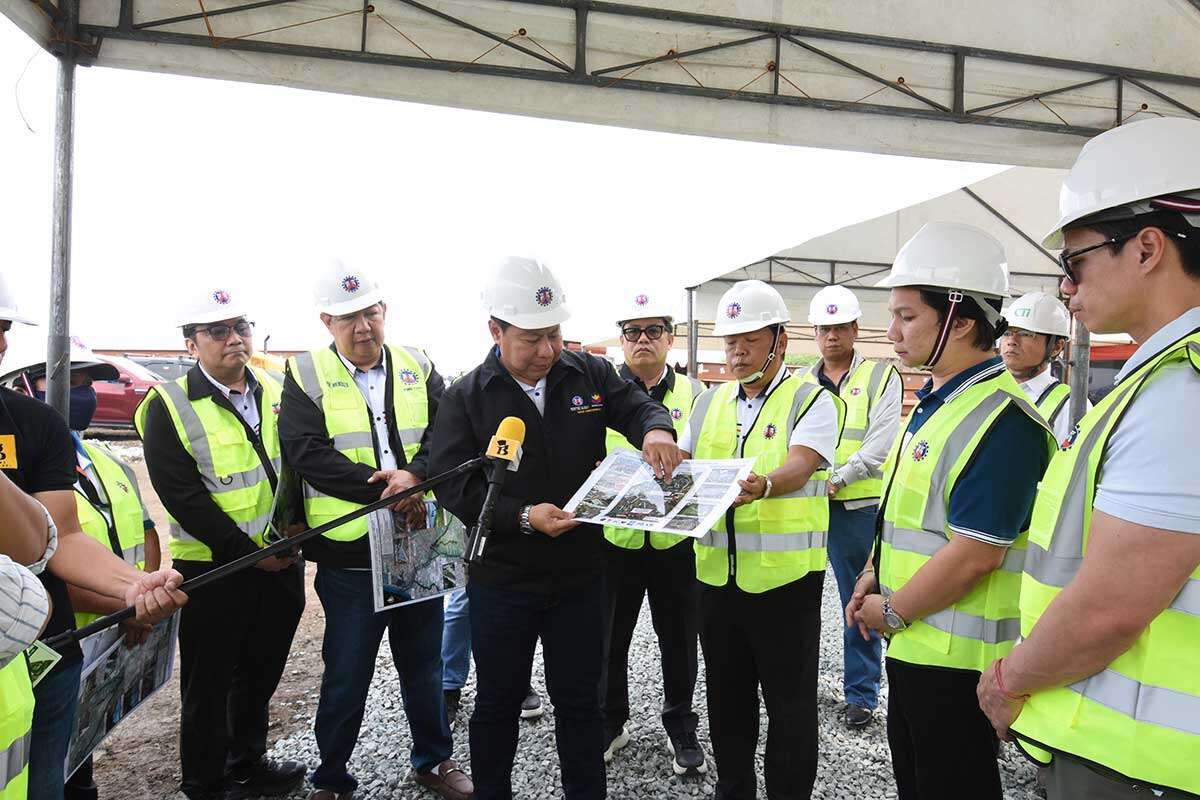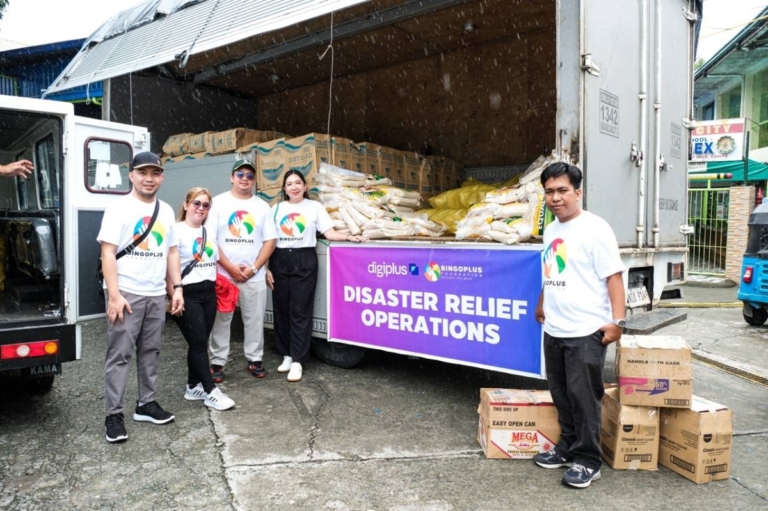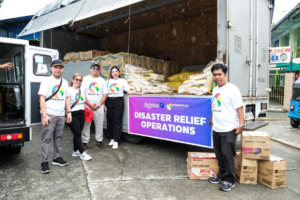The Department of Public Works and Highways (DPWH), through the Unified Project Management Office – Flood Control Management Cluster (UPMO-FCMC) targets to mitigate long-standing inundation issues in key industrial and residential zones of Cavite Province by implementing the Cavite Industrial Area Flood Risk Management Project.
DPWH Senior Undersecretary Emil K. Sadain provided Secretary Manuel M. Bonoan with updates following an inspection on Monday, August 25, 2025 with Noveleta, Cavite Mayor Davey R. Chua and Vice Mayor Dino Carlos R. Chua at the Cavite Industrial Area Flood Risk Management Project which focuses on the San Juan River and the major tributaries of Rio Grande and Ylang-Ylang River.
Also joining Senior Undersecretary Sadain during the site inspection at the on-going 75-meter wide by 2.6-kilometer long San Juan Diversion Channel are Stakeholders Relations Service Director Randy R. Del Rosario, UPMO-FCMC Project Managers Aurelio C. Mendoza and Jerry A. Fano, DPWH Japan International Cooperation Agency (JICA) flood management expert Yamaguchi Masahiro, and Mr. Joash Malimban of Bilyonaryo News Channel.
Senior Undersecretary Sadain, citing the latest progress report of UPMO-FCMC headed by Project Director Ramon A. Arriola III, said that the project’s Contract Package (CP)-1 which include the San Juan Diversion Channel, 522 meter Maalimango Diversion Drainage I, and 370 meter Lower Maalimango Diversion II has achieved 27.21% overall completion rate.
The San Juan Diversion Channel which is about 20 lanes in the context of a national road is design to divert floodwaters from the San Juan River and its tributaries, preventing overflow into low-lying residential and industrial areas and thereby protecting lives and property from the increasing risks posed by rapid urbanization in Cavite, added Senior Undersecretary Sadain.
Other components of the Cavite Industrial Area Flood Risk Management Project include the 3.6-kilometer Rio Grande River Improvement under CP-2, which is currently 22.60% completed; the 2.6-kilometer Ylang-Ylang River Improvement under CP-3, now 33.89% completed; and the 1.1-kilometer Maalimango Creek Improvement along with the 1.9-kilometer Upper Maalimango Diversion Drainage II under CP-4, which are 54.98% complete.
The project is supported by a comprehensive resettlement and housing program under CP-5, now 95.81% completed to ensure that project affected families are relocated to safe, well-developed communities.
With the strong support of Noveleta LGU, a land area of 8.80 hectares in Barangays San Rafael II and III is being developed for resettlement area with 887 housing units, each with a lot area of 40 square meters, including roads and alleys, open space, drainage system, and provision of water supply system thru Maynilad water concessionaire.
With a total project cost of about ₱22 billion, the Cavite Industrial Area Flood Risk Management Project is funded under the JICA Loan Agreement No. PH-P265 and is scheduled for full completion in 2029.
The current initiative in Cavite build upon the earlier success of the flood mitigation projects in General Trias and Imus—particularly the construction of reservoirs or retarding basins.
Senior Undersecretary Sadain, who oversees infrastructure flagship projects financed through Official Development Assistance (ODA), explained that countries like Japan have long utilized retarding basins to manage stormwater during extreme rainfall events—absorbing excess water and gradually releasing it at a controlled rate.
This proven approach is now being effectively localized in the Philippines with the continued support of JICA, said Senior Undersecretary Sadain.
Funded by JICA Loan Agreement PH-253 under the Flood Risk Management Project for the Rivers of Imus, Ylang-Ylang, and Rio Grande Sub-Projects and also implemented by UPMO-FCMC, several retarding basins were constructed to temporarily store floodwaters and reduce peak flows during heavy rains.
Meanwhile, Noveleta Mayor and Vice Mayor Chua expressed strong support and optimism for the ongoing flood control initiative of DPWH in their municipality, highlighting the use of high-grade Japanese steel and advanced construction technology.
The local chief executives have also credited the national government—through the DPWH —for the significant improvements in flood mitigation brought about by recent engineering interventions of retarding basins.
According to them, the earlier completed flood control facilities have played a vital role in managing river water flow and as a result, they have observed a marked decrease in the extent, depth, and duration of flooding in the low-lying barangays.
The effectiveness of these interventions became particularly evident during recent typhoons and episodes of intense southwest monsoon rains (locally known as habagat), which historically caused widespread inundation and displacement in vulnerable communities of Cavite.
The local government reaffirmed its commitment to sustaining collaboration on infrastructure projects that promote disaster resilience and environmental sustainability.



Leave a Comment